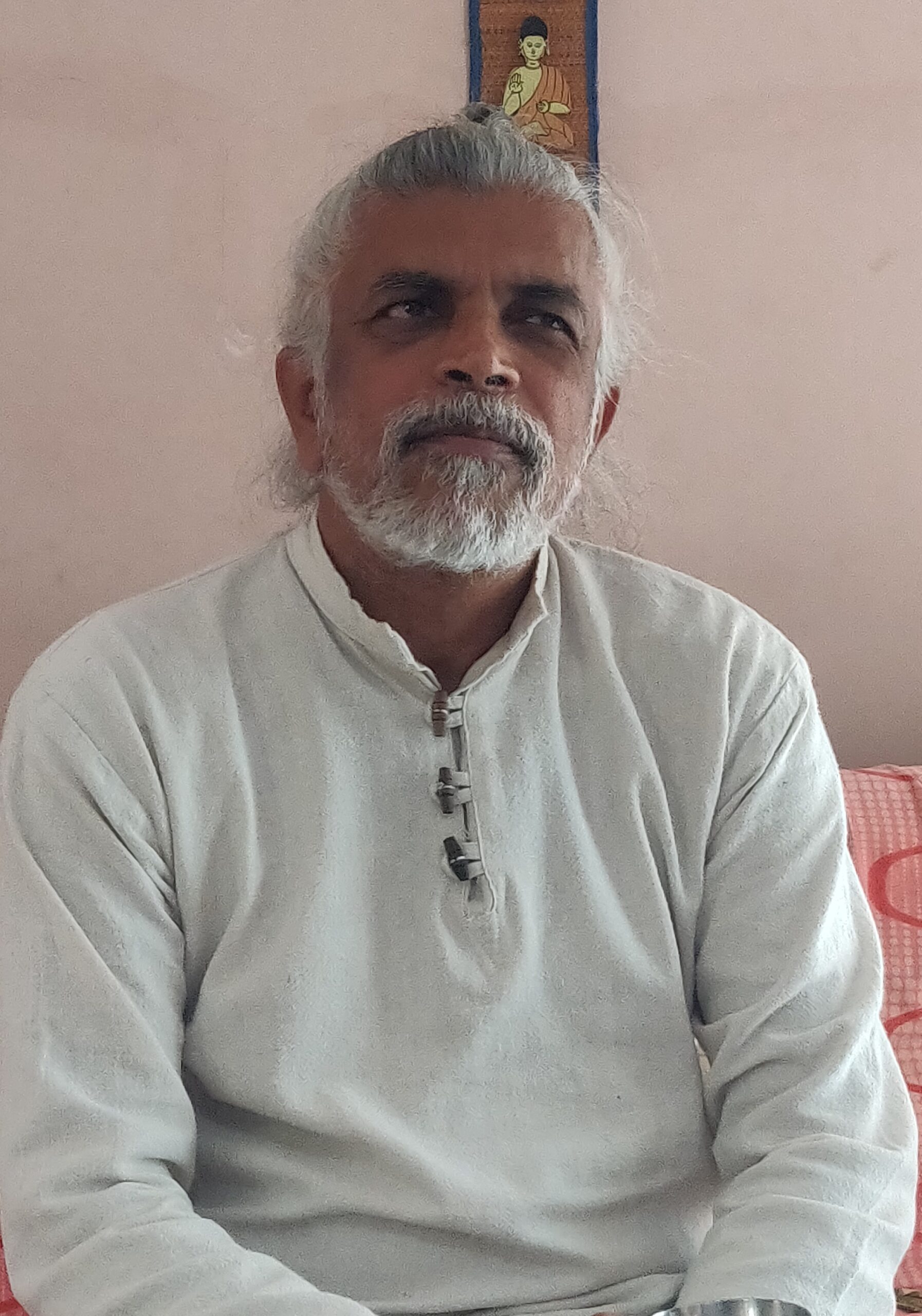Restoring the connect
As humans live in the online world for most part of their lives, the disconnect with surroundings has increased. Unless this is remedied, there will be no will or urgency to act on environmental and community concerns. TEL in conversation with technocrat Gopal S Krishna, who believes we MUST get the youth involved in the community.
Daily our cities are losing hundreds of trees and the lakes are shrinking, as buildings and roads take over. No one is protesting.
Plastic is choking storm water drains and rivers. No one even sees.
The air quality in some of our towns is way below liveable standards. No one is gasping, yet.
Crops are laced with toxins from the pesticides sprayed liberally. We do not notice beyond the taste of the masalas.
A leopard is caught by villagers and burnt after being beaten. His land has been stolen by the humans and hence, he ‘strayed’. Just another news brief.
Nothing seems to affect the 8 billion humans, glued to the mobile phone or laptop screens. Why would it, when the link no longer exists?
“It is only when you identify with something that you will protect it,” points Gopal S Krishna, the founding general manager of AMD India, and former head of Maxim Integrated Products India.
It is like how easily we identify with our healthy bodies and respond to its needs, he adds. “For a diabetic who has no feeling in his foot, this connect is lost and he cannot respond in time when it is hurt. So also, we humans have lost connectivity to nature and to our communities. We don’t care about deforestation or plastic pollution.”
This was what prompted him to call the delegates at a conference to work on re-establishing links to nature and our environment. Before talking of technologies for sustainable development, which Gopal agrees is vital, we need to connect the dots. “Take children to the market, or hospital the paddy field and forest, so that they see and identify with these.”

Pixabay image
In sight, in mind
Technology can indeed work to bring about changes in behaviour, says the technocrat. “I used to be a person who liked to drive his car fast. Just enjoyed the speed aspect. Till I got a hybrid which was gamified. On the windshield appears a light like an arc. This arc is blue if I am fast, showing fuel is being wasted. When I drive optimally, the arc is green showing best mileage. In a downslope, if I go slowly it turns white, showing I am actually gaining energy which is stored in the battery. I am now conscious of energy use and feel more connected with the car. I am aware when the car is struggling and guzzling as against when it is coasting along. Using technology, I got connected and changed my behaviour.”
Similar software he says when installed in homes can make us aware of air quality and prompt us to demand right action from authorities. Bring things back into sight and mind!
Building sustainable and resilient communities is a journey and we need to know where we are, where we want to go, the paths and the forks, which to take, etc. Technology can be applied at each level whether to see the green cover or monitor air, water and soil quality using sensors, or to develop a water index that ensures we are not pulling out too water, etc. So also, we can use software models to be where we want to be and where to go. But first, the community has to develop a volition to do all that, says Gopal.
Interestingly, when one ponders on how the disconnect happened and why, the answer points back to — technology! As we ‘progressed’ in our levels of comfort and ease of doing work, technology has nudged in and become an inalienable part of our lives. We have alienated ourselves from the world outside and now, with each other too. As phones link us to metaverses, we are barely even talking to people and our own families.
Identification
“We need to get the next generation hooked back into the community and the ‘offline’ world. Only then can we hope to create a sense of urgency whether it is about climate change, pollution or conservation. Deploying technology to address the challenges should come after that,” says Gopal who works with Amrita University as an adjunct faculty in the area of experiential learning and sustainable development.
Identification with a place or its people comes before any motivation to address a challenge. Indeed, as he points out, it is only the Pacific Islander living at 4 feet above sea level who can see urgency in climate change.
“Even when talking sustainable development, we need to know what the community wants. It may not always align with UN goals. Each community will have its requirements and be willing for some sacrifices. Hence, development must be inclusive.”
Nurturing compassion
Along with identification, another important ingredient for real development today is compassion. “This is what Mata Amritanandamayi advocates in educational institutions. Research must be compassion-based and help to solve real problems, she insists. As part of our Live in Labs exposure for students across all disciplines, we take them to live in villages which are the real labs. These are often remote villages across the country, many with very basic facilities. Lodging premises, sanitation, food, water, everything is in stark contrast to what the students have enjoyed in their lives. We literally bring them kicking and screaming to live in these areas and experience the problems. By the end of the program they thank us and often form lasting bonds with the villagers.”

Living with the villagers transforms most students. (Image from Pixabay)
The students, in teams of 8-9, live in the villages for 4-6 weeks and conduct surveys, prepare resource maps and hold discussions to identify key issues. They pick one critical issue which they bring back to the lab and design a solution which they take back to the village the next year and get it deployed.
The problems could be in the field of Education, Health, Energy, Water & Sanitation, Waste Management, Agriculture, Environment, Livelihood, Gender Equality, Climate Change & Risk Management, Peace and Justice.
Gopal gives the example of Raichur which he had recently visited with students as part of the Live in Labs project. The hot, dry place with water scarcity had a couple of issue but the team picked up sanitation as he most pressing need. What they saw was that despite the toilets built by the government, people were defecating in the open! The residents were reasonably affluent. The problem turned out to be that of water scarcity. With water not available in good amounts, the human waste was often not washed away. Further, the pits built were shallow and as a result, it raised a stink. Residents went back to open defecation.

The students prepare a ‘problem tree’ where the roots are the causes, the trunk the problem and the leaves are the result of the problem. They will come back with a solution next year. The solution is almost always co-developed with the people who will be using it, says Gopal.
Another issue identified was shortage of teachers in the schools. A solution could be online teaching, using the facilities of the village resource centre, or even remote support from Amrita, but these will need to be studied keenly.
Community woes
In Rajasthan, the students visited a village with acute water scarcity and helped build a water delivery system using locally available materials and easily maintained by the locals. In a village in Waynad in Kerala, loss of livelihood was the problem. The area had lemon grass growing abundantly. The students developed a technology to distil the lemon grass oil, with the villagers operating it.
In his capacity as a technology expert who holds over 20 US/International patents, Gopal is part of the plan to make the implementation of the student projects stronger and impacting. He has over 35 years of semiconductor and embedded solutions development leadership experience.
Gopal, who graduated in engineering from RVCE, Bengaluru has a master’s in electrical and Computer Engineering from the University of California, Santa Barbara.
Amrita University has a branch of study dedicated to sustainable development. The Amrita School for Sustainable Development (ASD) aims at making sustainable development a reality for everyone, including the most vulnerable communities. The Education for Life (E4Life) program of ASD integrates social, economic, environmental, and cultural aspects of communities while assessing their needs and enabling global youth to engage through a blend of both experiential and academic learning.
By Jaya
